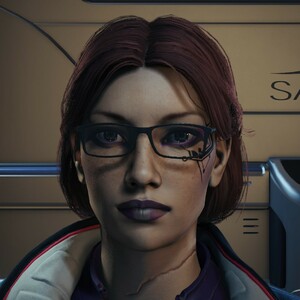Total Perspective...
06 Jan 2019Vallysa
The ancient Earth strategy game Chess consisted of a board with 64 squares where two opponents would each command a team of 16 pieces (6 unique) in an effort to capture the opponent's "king" piece. Each type of piece had different movement options available to it and could eliminate other pieces from the board, thereby increasing the "king's" vulnerability to capture, ending the game. When you calculated the possible configurations of a game with 64 squares, 32 pieces, and 12 unique movement options, the resulting number of possible combinations on a Chess board was approximated at greater than 10^120th power. That number of unique combinations was greater than the estimated number of atoms in the known universe.
Vallysa constantly pondered the scale of what that number meant, and was acutely aware that the true perspective of that size was outside the possibility of human comprehension. In the Milky Way galaxy alone, there were an estimated 300-or-so billion stars. The systems she had visited by now throughout the course of her career maybe numbered in the thousands, which was virtually insignificant in any mathematical terms. Any significance, therefore, would have to come from applying an arbitrary attachment of meaning to any of those subsets of infinitesimal chances. For her, one of those was the existence of life, both the exotic inexplicable types thriving in seemingly inhospitable environments, and the opportunity for her own species to expand and thrive.
The 2MASS lichens had been her first discovery, and she continued to find more instances of strange, unique life growing in areas she had always thought would be barren and devoid. Two meter tall wormlike structures, jutting from craggy rock, reached towards the starlight of the most inhospitable systems. Strange crystalline and globular structures floating in the void of space sent her composition scanner into an indeterminate loop as it tried to assign either a geological or biological category to them. As best she could tell, these floating, brilliant structures were the deposits of billions of tiny, coral-like life forms busy absorbing interstellar gases, particles, and radiation in their delicate symphony of reproduction, expanding their dwellings into great colonies that filled asteroid fields and nebulae. Giant scaly deposits, looking like termite mounds larger than her rover, poked mysteriously out of the water-less, dustless surfaces of planets separated by thousands of light years.



The mystery of how inert life forms like this spread throughout the galaxy evaded her. Had they been carried, definitively or accidentally, by another space-faring race millennia ago? Did they have a means for faster-than-light travel, evolved outside of human understanding of physics and technology? Did they actually take billions of years to spread, and humanity's understanding of the age of the universe errors by orders of magnitude?

She did not know. What she did know was that she would forego her usual pragmatic practice of harvesting valuable resources used in her own engineering and synthesis if it came at the expense of their reproductive cycle. Her scanners told her that cadmium, vanadium, and other rare elements were stored within their seed-pods, but she would leave them undisturbed so they could continue to live, die, and spread in their own mysterious ways and time.
The vast scale of the galaxy, never mind the universe, meant that if she wanted to have a reasonable chance of finding her other crown jewel of exploration, Earth-like worlds, she would have to narrow the scope of her travel at times. Jumping randomly from star to star did technically work considering explorers often hit hundreds or thousands of systems in a deep space journey, but that didn't mean there weren't ways to improve those small odds of finding a perfect system into slightly less-small odds. There was more than one day to optimize the systems types, but her favorite way was to only use "F" type stars as jump options between her waypoints. Within a few hours of refining her path, he saw and heard the slight frequency modulation on her scanner indicating the right material mix. Her hands shook as she calibrated her instruments appropriately, and saw the a beautiful green and blue orb resolve on her display.
She spent many hours firing probes and scanning the surface of the planet, eager to share her discovery with humanity when she returned. Throughout her trip she found a few more Earth-like worlds using the narrow jump-route, in addition to another of equally beautiful--if inhospitable--type of planet, the ammonia worlds. Mysterious and hostile, they resembled Earth-likes in every visual feature except color palette, and she dreamed of the day the Pilots Federation would broadly disseminate further ways to explore those types of planets.


Satisfied with her Earth-like discoveries, she reopened her jump options to all possible star classes, eager to see what other unknown unknowns awaited her, and continued her journey to the Empyrian Straits.
